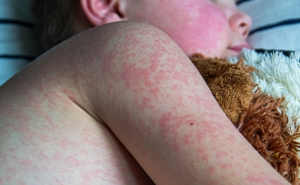COVID-19 Tradeoffs: Feeding Others and Staying Fed
Despite what you may have seen while grocery shopping during the COVID-19 pandemic, there are no imminent food shortages in the U.S., according to a March 17 statement by the U.S. Food & Drug Administration.
America’s food supply network is vast—an important driver of the economy as well as a lifeline for the nation’s people. As of 2017, the U.S. Department of Agriculture reported that agriculture and food-related business accounted for 5.4% of the GDP—more than $1 trillion in total.
And for the time being, this supply chain is robust, though some stores and communities are experiencing flurries of panic buying.
“Food is being replaced every single day, but people are just kind of worrying and pulling it back off the shelves every day,” says Roni Neff, PhD ’06, ScM, director of the Johns Hopkins Center for a Livable Future’s Food System Sustainability and Public Health program. “There’s just a need for a new equilibrium and to be able to respond to that.”
Nancy Kass, ScD ’89, deputy director for Public Health at the Johns Hopkins Berman Institute of Bioethics, says that the federal government’s recommendation to maintain a two-week reserve of nonperishable food and supplies for emergencies remains a good rule of thumb. “We really don’t want people going to the grocery store all the time,” she says. Fewer shopping trips reduces the risk of exposure for shoppers and workers, as well as the constant drain on store inventory.
Communities already in crisis will require additional support during a pandemic. Some cities are picking up the slack where they can—for example, delivering lunches that children from low-income families would normally receive at school. As Lisa Cooper, MD, MPH ’93, director of the Johns Hopkins Center for Health Equity, points out, “People who don’t make a lot of money can’t afford to go shopping and stock up on groceries”—let alone buy nutritious foods that are already scarce in urban food deserts. Kass suggests that more temporary food banks and delivery services may be needed.
For the general population, food delivery might seem like a luxury that puts both buyer and courier at unnecessary risk. But people may lack the means, skill, or time for meal preparation. Restaurant delivery jobs offered by gig economy employers like DoorDash or UberEats can also offer essential income for many Americans in uncertain times, even if that puts them on the pandemic’s frontlines.
“This is not a workforce that is being well-supported, and we’re asking the world of them,” says Neff. “So they need to be assured not just of having jobs, but also hazard and overtime pay, good protective equipment, and the ability to maintain social distancing.” Kass notes that the dilemma of keeping restaurants going is also keen for kitchen staff, who may encounter fewer strangers than drivers but still routinely work in relatively close quarters.
This issue is especially thorny in times of heavy job losses and economic uncertainty. Farm, grocery, and distribution work remains essential, but the vast majority of café, bar, and restaurant workers have found themselves abruptly unemployed; according to the National Restaurant Association, between 5 and 7 million industry workers are out of work because of the pandemic. Given that many of these workers live paycheck to paycheck, even a risky job is hard to turn down. “People who need money will work, and I don’t blame them one bit,” says Kass.
According to Erin Biehl, MS ’15, a collaborator of Neff’s and a CLF program officer, protecting these and other workers is part of ensuring food security. She hopes that one silver lining of the pandemic response will be better legal, financial, and medical support for food workers.
“Making sure that we have protections in place for all food system workers … is critical for making sure that we can keep food coming to stores,” she says.
Michael Eisenstein is a science writer whose work has appeared in Nature, SEED, Wired Science, and Hopkins Bloomberg Public Health, among other publications.





